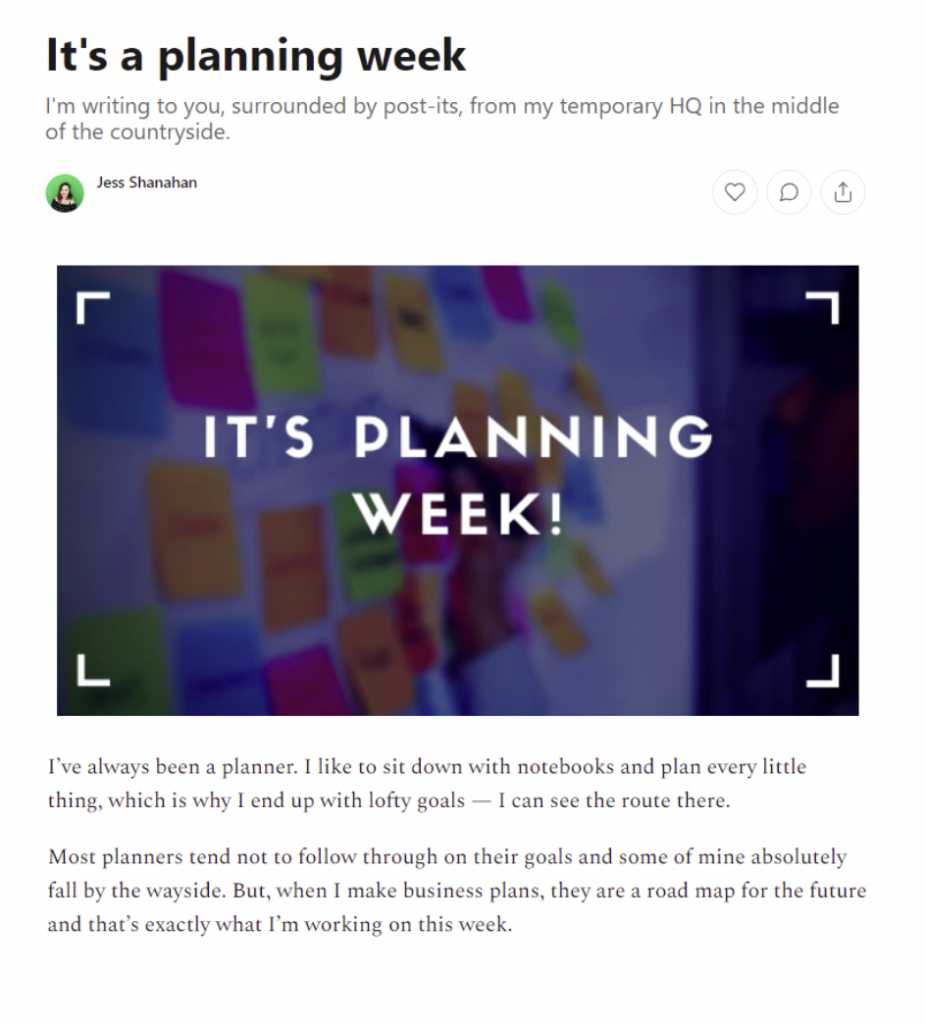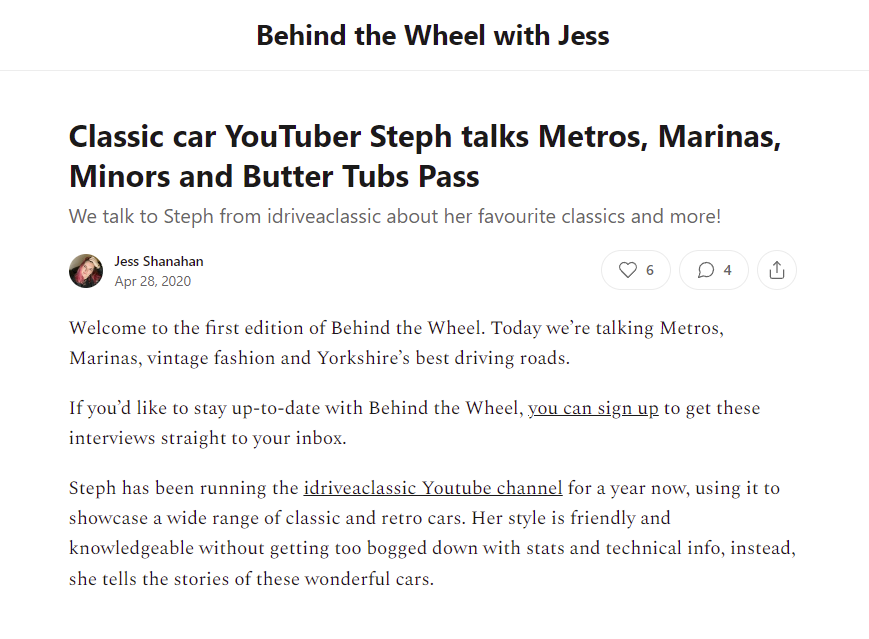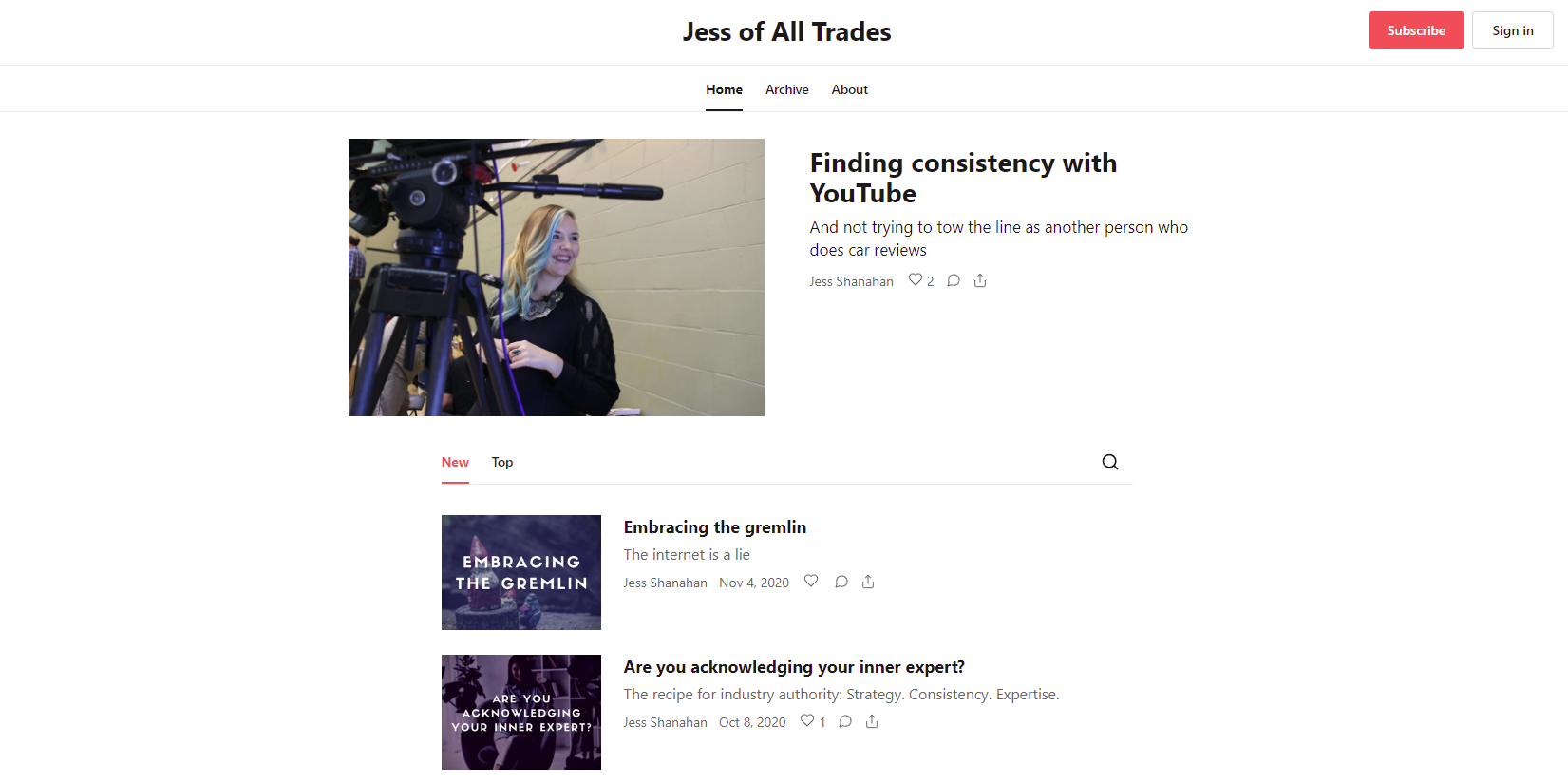Trends
Do You Really Need a Newsletter as a Freelancer?
By Jess Shanahan June 22nd, 2022During the various lockdowns of the past few years, I—like many—decided to try something new. In fact, I tried a lot of new things, from watercolor painting (disaster) to making my own T-shirts (quasi-success).
On the freelance front, I tried creating a newsletter. I had grand dreams that monetizing my content on a platform like Substack or Ghost would be a game-changer. Sadly, it wasn’t the cash-cow other creators made it out to be. That said, I did discover some benefits to the experiment. In fact, the newsletter became a great way to showcase my work.
I had a few false starts, but in the end, I found that launching a newsletter was worthwhile. Here’s what other freelancers can learn from my experience.
To monetize or not to monetize?
Some freelancers use newsletters as a source of income, selling subscriptions and premium access to their content. This can be a great way to make money, but as creators know, it takes a long time to build a profitable following. If you already have significant influence and a large audience, a newsletter can be lucrative—but for most of us, getting that first subscriber is a ton of work.
When I started my newsletter journey, the idea was to monetize it. But I quickly realized just how long it would take to make any meaningful income. I weighed my options and, ultimately, figured out I’d be better off using the newsletter to highlight my best work.
 So I took a look at where my portfolio was lacking. I decided that giving subscribers insight into the business side of my freelance career could help position me as an expert.
So I took a look at where my portfolio was lacking. I decided that giving subscribers insight into the business side of my freelance career could help position me as an expert.
I set up Jess of All Trades with this goal in mind. After experimenting with a couple of different formats and subject matters, I ultimately settled on the entrepreneur-and-writer angle. Today, my newsletter tackles topics from mental health and toughness to branding and freelance life. I took a little time off from posting, but now I’m back to a monthly schedule.
Finding your niche
If you do it right, a niche is a great way to get more work as a freelancer. In the context of a newsletter, you’re probably going to get more subscribers if you find a topic that really speaks to people or offers a new angle on a popular subject.
Your niche doesn’t have to be specific to the type of writing you do—it can focus on one aspect of your work. For example, if you’re a fintech writer, you might use your newsletter to talk about fintech trends. Or if you’re an illustrator, your newsletter might focus on what your day-to-day looks like as you complete a project.
Beyond a subject matter that’ll resonate with readers, you’ll also want to decide what you’d like to get out of your newsletter. Will it be a living portfolio? Will it give potential clients insight into how you work? Will it help establish your expertise in a certain area? Try to think about how you can provide value—to both your readers and your own career.
Getting the word out
No matter what kind of newsletter you’re building, it’ll take time to grow a subscriber base.
Your first step should be to spread the word. That means telling friends, coworkers, fellow freelancers, social media followers, family, and anyone else you think might be interested about your newsletter. A pinned Tweet is a great way to remind people to subscribe. I’ve had success including a link in my email signature, too.

Next, focus on consistency. The more frequently you put out content, the more people will start to look out for it. This gives you more to shout about on social media. It also gives your followers more chances to hit subscribe.
Finally, lean into collaboration. If you can tap into someone else’s audience, it can help you grow a subscriber base faster. I did this by interviewing influencers who I suspected would share the content. It was a great way to pick up new followers quickly.

Pro tip: If you do this, make sure to send your interview subject the link—it’ll increase the chance they share it!
Finding the right platform
Let’s take a quick look at some of the most popular newsletter platforms out there.
Substack
Substack has blown up in a big way over the past couple of years. The platform provides a straightforward, attractive user interface that does most of the hard work for you. It also functions as a blog, allowing you to link to your posts—so even non-subscribers can view them. This is particularly handy if you’d like to use your newsletter as a portfolio of sorts.

Substack also allows you to easily monetize your newsletter by adding a premium subscription option.
Ghost
At its core, Ghost is a blogging tool, but it also has built-in newsletter functionality. This is a great choice if you want a little more control over the look and feel of your blog or newsletter. There’s a fee to use the platform starting at $9/month, but like Substack, Ghost allows you to earn recurring revenue from your content.
Medium
If you run a Medium publication, you can now choose to send a newsletter to your followers. This is a great way to get more eyes on your content. While Medium doesn’t offer subscription options, the Medium Partner Program allows you to earn money for every paid Medium member who views your content.

The big downside to Medium is that you don’t own the email addresses of your followers—you can’t even access them. That means if you do decide to switch to another platform later, you’ll lose your audience.
Traditional newsletter platforms
If the idea of reaching your subscribers and no one else is appealing, a more traditional platform might be the best fit. Mailchimp is a straightforward solution with lots of configurations and templates available even at the free level. There are also more sophisticated options like Active Campaign (starting at $29/month) and ConvertKit (free for the first 300 subscribers, and then starting at $9/month for more robust features).
Not everyone needs a newsletter
A newsletter is hard work. For some freelancers, the time and effort it takes to get one off the ground—and keep it up to date—may be better spent on pitching.
But if you’re serious about embracing the newsletter lifestyle, you need to commit to it. Anna Codrea-Rado, a prolific Substack writer, recently wrote about her daily routine. The TL;DR? Managing a newsletter can be a full-time job. So, if you’re thinking about taking the leap, consider whether or not you truly have time for it. Things might be quiet now, but what about in a month? A standard portfolio website and your social platform of choice might be a more sustainable option.
A newsletter takes a lot of dedication and, while it’s not for everyone, there are numerous benefits to putting in the time—from opening up opportunities for monetization to promoting your work in a fresh way.
Image by storyset